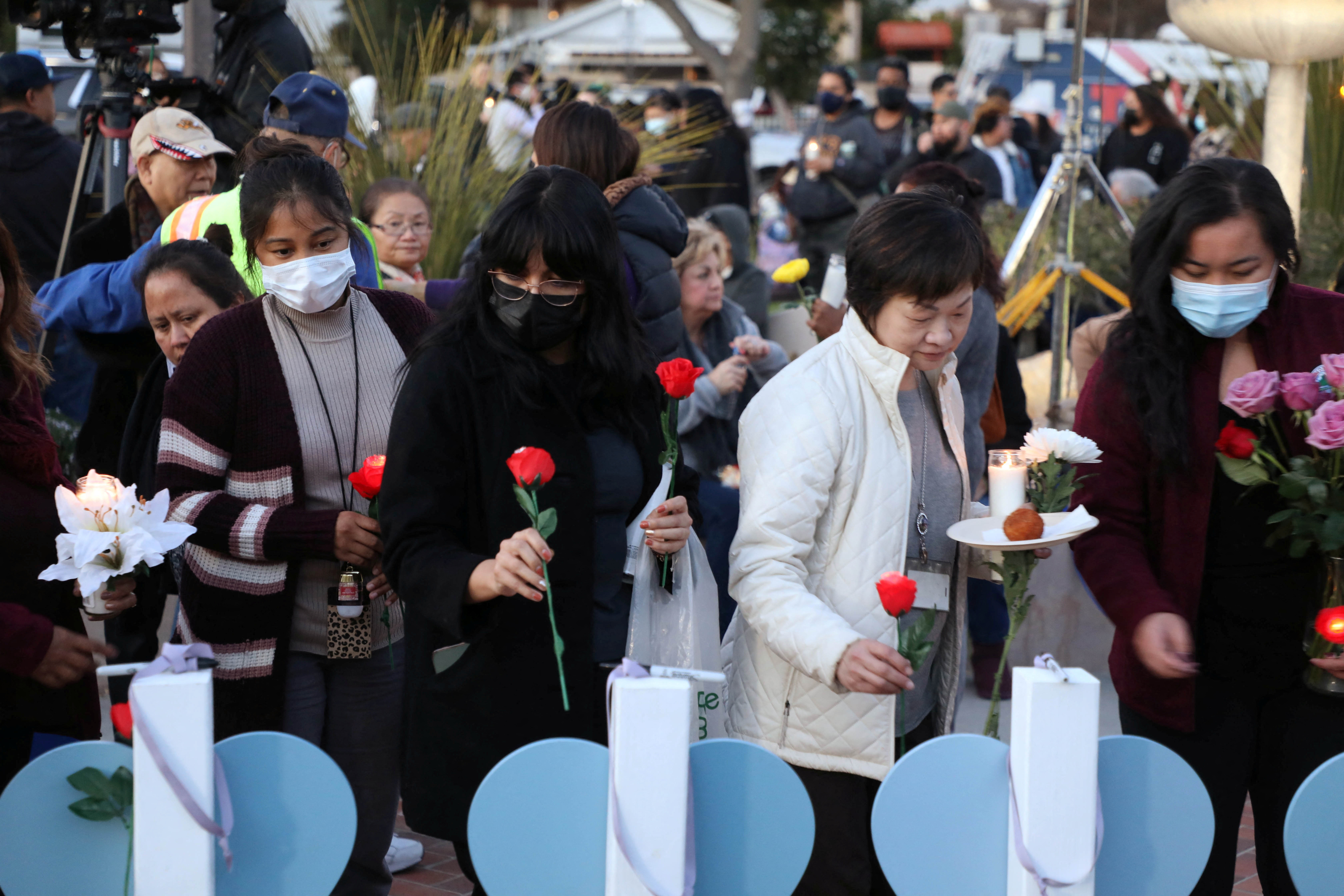
America was supposed to be a place of safety for Jose Romero when he arrived some two years ago to work on a California farm alongside other immigrants from Mexico and China.
Romero was killed on Monday, shot dead by a gunman along with six other farm workers in Half Moon Bay, just south of San Francisco. Even in a nation all too familiar with gun violence, the shooting was stunning, coming just two days after another gunman opened fire at a ballroom in Monterey Park, an Asian American enclave outside Los Angeles.
In all, 18 people died in the back-to-back shootings, rattling two close-knit communities that had drawn immigrants seeking opportunities.
“You look to improve your life and then you end up with this,” said Romero’s cousin, Jose Juarez, quiet and sullen on Tuesday as he took a break from cooking at a Mexican taqueria in a Half Moon Bay strip mall.
That police said the attacks were carried out by assailants known within the community – Huu Can Tran, 72, frequented the Monterey Park dance studio and Chunli Zhao, 66, worked on a Half Moon Bay farm – only added to the sense of fear felt by immigrant groups that have been the targets of racist rhetoric and attacks in the United States.
As many as 32% of Asian immigrants and 23% of Latino immigrants in California say they are “very worried” about becoming victims of gun violence in their adopted home – three times the level of fear reported by people born in the United States, according to data gathered by the University of California, Los Angeles, and shared with Reuters.
The massacres heightened those concerns for some people.
Antonio Perez, who now lives in Half Moon Bay after moving from Mexico in 1983, said he feels stuck between cartel violence in his homeland and gun violence in the United States.
“We never expected this kind of extreme here,” Perez said, shaking his head. “What a tragedy.”
About 380 miles (610 km) south, in Monterey Park, residents expressed fears in the aftermath of the dance hall shooting that the poison of America’s gun culture and epidemic of mass shootings was infecting Asian-American communities.
“Americans can have guns, there are guns everywhere,” said Frank Hio, 36, who is originally from China. “It’s dangerous here.”
In the thriving suburb known for its Asian stores and restaurants, some people expressed anguish that the gunman came from within the community.
“The shooters are Asian, and the victims are Asian,” said Rolando Favis, 72, who moved to the United States from the Philippines 38 years ago.
But many also said they had been more fearful of their safety for several years, following the rise in hate crimes against Asians in the wake of the pandemic and rhetoric from then-President Donald Trump blaming China.
In the aftermath of the pandemic, Asian American gun ownership increased. A third of those who owned guns said they carried weapons more frequently amid the anti-Asian incidents, and another third said they kept guns loaded or unlocked in their homes, according to a study by the University of Michigan.
At the Euro Arms Inc gun store in Alhambra, three miles (5 km) from the scene of the Monterey Park massacre, store assistant Wesley Chan said gun sales had risen since the start of the pandemic, including among Asian Americans in the area.
“Everyone was scared and wanted to protect themselves,” he said.
About 9.3% of Asian immigrants keep guns in their homes in California, compared with 5.6% of Latino immigrants and 12% of white immigrants, said Ninez Ponce, the lead researcher on the UCLA study. Overall, about 17.6% of Californians of all backgrounds keep a gun at home.
Both Tran and Zhao used semi-automatic pistols. Police have not said where or when they were acquired.

